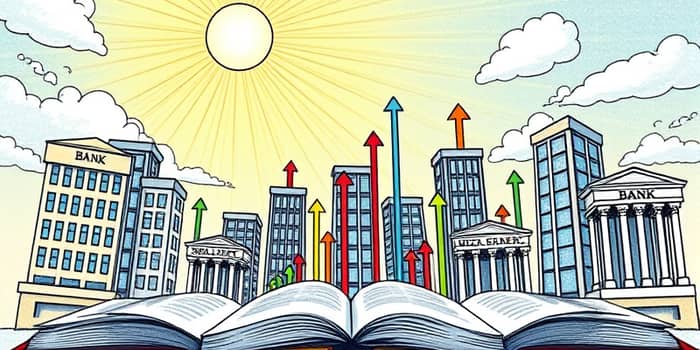
In early 2025 financial institutions delivered earnings that outpaced analyst projections, thanks largely to steadily expanding loan portfolios and stronger fee income streams. Across the industry, banks of all sizes showcased resilience amid changing interest rate environments and evolving borrower demands.
The combination of strategic investments, disciplined risk management and a favorable macroeconomic backdrop supported net interest income and noninterest revenue, enabling banks to exceed forecasts and maintain capital strength.
Loan growth emerged as a primary catalyst behind the earnings beats, as demand for commercial, real estate and consumer credit firmed throughout 2024 and into 2025. With aggregate loan growth nearing 2.7 percent year over year by February, banks capitalized on higher lending spreads and improved asset yields.
Investors welcomed these gains, recognizing that sustained lending activity underpins durable revenue streams and offsets pressures from higher funding costs. As a result, many institutions reported both top line expansion and margin gains beyond consensus expectations.
This data highlights the varied momentum across institution sizes, with regional lenders showing slightly higher median growth projections compared to their larger counterparts. Meanwhile overall loan balances grew at a faster pace in 2024 than the previous year.
Several large banks stood out for their loan origination achievements and earnings resilience. Two examples illustrate the breadth of performance.
Several factors underpinned the industrys lending expansion and resulting earnings beats. Banks capitalized on improved borrower sentiment and strategic initiatives to capture market share.
While loan growth provides a powerful revenue boost, rising credit costs and economic uncertainties warrant caution. Potential default and nonaccrual loan ratios increased modestly in 2024 but remained below pre pandemic levels.
Overall, asset quality remains sound, supported by disciplined credit frameworks and proactive portfolio management.
The Federal Reserve and bank surveys suggest that lending standards will remain stable or modestly ease through 2025, provided the economy avoids a significant downturn. Higher interest rates have weighed on bank securities values, but robust loan pipelines and fee income have mitigated capital pressure.
Looking ahead, banks anticipate that an improving macroeconomic outlook and sustained borrower confidence will drive lending demand across commercial and consumer sectors. However, ongoing inflation concerns and geopolitical risks may temper growth prospects.
Bank of Americas CEO Brian Moynihan highlighted the role of data and AI driven efficiencies in achieving broad based commercial loan growth and exceeding forecasts. Similarly, U.S. Bancorps CFO Gunjan Kedia credited disciplined expense management and strong returns for the banks earnings resilience amid uncertain markets.
Industry analysts forecast that total loan growth for large and midsize banks will remain above five percent through late 2025, while small banks may post slightly higher gains. Credit quality is expected to improve gradually as businesses adjust to the post pandemic environment and economic activity normalizes.
Beyond loan growth, banks plan to broaden client engagement through targeted product cross sell and deeper sector expertise. This approach aims to boost fee yields and fortify client relationships, further diversifying revenue and reducing reliance on net interest margins.
The banks earnings season demonstrated that robust loan origination and fee income expansion can overcome higher funding costs and tighter credit conditions. As institutions refine their technology platforms and maintain disciplined risk practices, they are well positioned to sustain outperformance.
Investors and corporate customers alike will watch the coming quarters for signs that this momentum endures. With lending standards poised to remain supportive and credit quality stabilizing, banks have an opportunity to build on recent gains and deliver value for shareholders and stakeholders through 2025 and beyond.
Furthermore, differences between large money center banks, regional lenders and community banks will shape the competitive landscape, with each segment leveraging unique strengths from scale to local relationships. The coming year will test banks ability to harness growth drivers while managing risk in a shifting economic backdrop.
References













